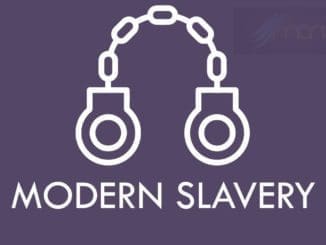
From hosting a grand wedding celebration to growing your business, you may want to apply for a loan for several reasons. Since not all financial needs are the same, many types of term loans are available for you to choose from.
You can select the right type of term loan as per the amount you require, your urgency, eligibility, and more. However, before you start, you must understand term loans. A term loan is a lump sum loan the lender provides on fixed terms for a specified duration or tenure. A term loan can be a short-term or long-term credit facility.

Before applying for any loan, it is essential to understand the difference between these types of term loans to find a better match for your requirements. Read on to learn how long-term and short-term loans differ and how to choose between the two.
Short-Term Loan
As the name implies, a short-term loan has a shorter duration of less than 5 years. It is a temporary financing option the lender provides at higher interest rates. Payday loans, invoice financing, and banking overdraft are some examples of short-term loans.
Long-Term Loan
Long-term loans are secured-term loans for a tenure of up to 30 years. Getting approval on a long-term loan is a more extensive process than a short-term loan.
Since long-term loans have a higher risk of non-repayment, the eligibility and document criteria for a long-term loan are more stringent. Home loans, education loans, car loans, and loans against property are examples of long-term loans.
How to Decide Between a Long-Term and Short-Term Loan
Here are some simple questions you can ask yourself to help you make the right choice.
Do You Need Substantial Financing?
To pay off a considerable amount, you will need a longer time. Hence, consider a long-term loan if you are looking for a large amount of credit. Short-term loans are restricted by time, so you get a lesser amount for short-term loans.
Do You Want to Pledge Collateral?
Since lenders need a guarantee of repayment for more significant amounts, long-term loans are backed by collateral. Lenders want to minimize the risk, so you need to pledge collateral when opting for a loan with a longer tenure.
On the contrary, you can take a short-term loan if you do not want to submit any asset as collateral.

Do You Need Quick Funds?
Short-term loans are the best option if you are looking for a quick and easy way to get funds. Most banks and NBFCs provide short-term credit within 24 hours. Long-term loans have a longer approval process, which makes short-term loans a better option for managing unforeseen emergencies.
What are the Differences Between Long-term and Short-term Loans?
Eligibility Requirements
Eligibility criteria for short-term loans are more relaxed than for long-term loans. As a result, you can get quick approvals since lenders consider it less risky. Salaried or self-employed individuals over 21 are eligible for long- and short-term loans.
Applicants need to pledge collateral when applying for a long-term loan, whereas a short-term loan requires no collateral. This collateral could be a property document, a business document, a car, or other valuable asset.
Furthermore, the minimum income criteria also differ across lenders. When availing of a loan, a credit score is another essential parameter lenders check. For a short-term loan, an excellent credit score is required.
As this loan is not backed by collateral, you must have a good credit score to ensure timely repayment. Consequently, you can also get a long-term loan with an average credit score.
Documents Required
For a short-term loan, you need to submit only minimal documents. At the same time, long-term loans require additional documents. For example, you must provide income proof, ITR, and original collateral documents for a long-term loan.
If you are applying for a long-term loan for business purposes, you must also show a business profit and loss statement. Similarly, the asset acts as collateral when taking long-term loans for personal use, such as home or vehicle purchases.
Interest Rates
Short-term loans have a higher interest rate than long-term loans. In this way, your overall loan expense is high. On the contrary, since long-term loans are secure and the repayment duration is longer, lenders charge lower interest rates.
EMI Amount
Since short-term loans have higher interest rates and shorter duration, the EMI is substantially higher for short-term loans. For instance, you get a personal loan for ₹1 Lakh at an interest rate of 15%.
For 3 years, your EMI will be ₹3,467, whereas, for a longer term of 7 years, the EMI will be ₹1,930. This difference in both these amounts explains how tenure and interest rates affect your monthly installments.
Repayment Duration
Short-term and long-term loans have a specified duration for loan repayment. A short-term loan has a maximum tenure of 5 years, whereas a short-term loan has a maximum span of up to 30 years.
Here is a snapshot of the differences between long and short-term loans.
| Differences | Short-term Loan | Long-term Loan |
|---|---|---|
| Eligibility requirements | Relaxed | More stringent |
| Documents needed | Minimum documentation is required | More documents are required, especially original collateral documents |
| Interest rates | Shorter repayment duration, so higher interest rates | Longer repayment duration, so lower interest rates |
| EMI amount | High instalment | Lower EMIs |
| Repayment duration | Less than 5 years | 5-30 years |
Understanding the key differences between long and short-term loans will help you make the right decision. Whichever one you choose, ensure you only borrow what is required.
Since getting a term loan for longer than needed can restrict your monthly finances for many years, ensure you use an EMI calculator and check your current finances before deciding.
Researching lenders and comparing term loans can help you make the right choice.




Be the first to comment